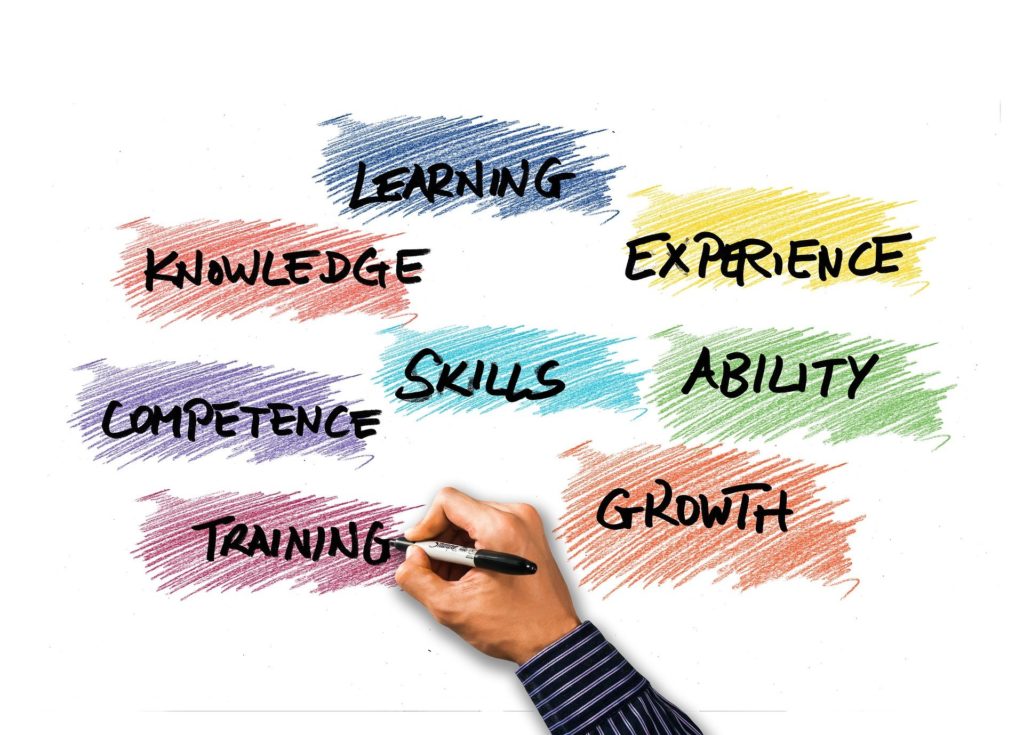Interview with Ruggero Segatto, Director of I.S.R.E of Università Salesiana di Venezia

Ruggero Segatto, Director of I.S.R.E of Università Salesiana di Venezia
1. What are in your opinion the soft skills necessary for young people to increase their employability?
From the experiences made in the past few years, we found that soft skills have increased their weight in the assessment of the persons in search of work. So much so that we prefer to call them “key skills”, because they now have very little of “soft”.
However, starting from a very empirical approach, we have noticed that the assessment of skills does not use a rigid scheme by the employer, but that between professional skills and key skills is established a symbiotic relationship that unlike contexts, historical moments, development period or not, it conditions the research and importance itself.
Compared to this, technological and digital development has increased the gap between companies in sectors with a high technological content and those in sectors with the need for less skilled workers.
We do not have specific general data that can document this trend, but from some research carried out in order to the production sectors more akin to the Salesian reality (graphics, communication, mechanics, electrical sector), we have found that in recent years there has been a return, for companies in the first case, to request a high level of mastery of technical and professional skills and a high degree of specialization. Until recently, however, more “eclectic” figures were sought.
This has led, for professional skills, to an increase in the duration of training courses and specialization of young people.
In our opinion, the trend has also had an impact on key competences, increasing their weight. Highly specialized figures in fact require at the same time of great adaptability skills, confrontation, responsibility, teamwork, constant learning attitude, which the most eclectic profiles in the past could partially compensate.
It is always difficult to draw up a ranking of the key skills required and those mentioned above that represent, in our opinion, those on which more attention is paid.
However, particular consideration should be given to the issue of interpersonal dynamics in the workplace which in recent years has led to ever greater problems and consequently less and less hidden costs. The phenomenon deserves a specific analysis. However it is difficult to separate the level of key competence from the assessment of the employee as a person, with his way of thinking, relating, behaving. But this is an increasingly considered dimension and object of careful evaluation.
2. What digital skills are needed today?
With respect to the issue of digital skills, I would like to report a figure for the Wolrd Economic Forum which claims that 65% of children now attending primary schools will make jobs that still does not exist.
Beyond the numbers, it is interesting to understand how digital transformation leads to the emergence of new works that often draw on different specifications. They are the so-called “hybrid jobs”.
The answer to this does not lie in hybrid skills, “a little bit of everything”, but in specialized skills suitable for these specific new jobs.
From the perspective of digital, expertise in digital marketing, data analysis, big data management, appear at this time in great demand and are accompanied by all the skills related to the theme of Industry 4.0.
A specific consideration is for the basic digital skills required from employees and affecting large sectors of the population. We are not talking about jobs with a high technological content, but about skills whose lack of fact contributes to widening the social gap, a very strong problem in reality like ours. With respect to this, the human but also social and economic tragedy of Covid 19 has shown that learning by trauma is the most efficient way of learning for man, absolutely valid specifically in Italy. This method has highlighted how the mastery of basic digital skills (use of devices, apps and tols for work, use of platforms for smart working …), is not a luxury in the workplace but a preliminary need.
Unfortunately only learning by trauma will allow realities like our country to recover part of the competitive disadvantage in terms of digital skills, accumulated over the years due to lack of programming, insufficient level of training, underestimation of the context and infrastructure delay.
3. In your opinion, is there a gap between educational and training programs and the demands of companies?
The question of the gap between educational programs, or more generally between training curricula and the demands of the labor market is very complex and requires a reflection capable of analyzing the different distinctions.
First of all, it should be recognized that professional training curricula tend to adequately respond to the needs expressed by companies. Requests for mostly technical skills that students leaving the three-year or five-year course can act immediately in low-skilled and small-sized work contexts are well covered. This does not mean that training is of a low standard, quite the contrary. Often companies recognize that the technical skills possessed by students are largely sufficient to meet the demands of “that” labor market.
However, the issue of second-level higher education curricula should be explored. Although technical institutes have taken a step forward compared to the past, experience shows that training programs are very often theoretical and not very contextualized related to company requests. If the theoretical study can be useful in the first years of study, because it is important to remember that knowledge is essential for the construction of skills then, it cannot be sufficient in the last years of study. In fact, keeping the focus on theoretical issues, far from reality, probably feeds the gap between requests from the labor market and training responses.
What we have been observing in recent years is an appreciated rapprochement between academia and the corporate world. We cannot say with certainty that the gap is reduced in this training segment. Yet, virtuous experiences have been observed in which companies particularly interested in investing in research and development have collaborated with the university, bringing the company’s experience to school. Teaching is also slowly updating methods and more and more students are required to produce project work, case analysis, Action Learning reports on real cases.
A separate mention must be made for the post-diploma courses that take place in the ITS – Higher Technical Institutes – courses that, at least in Veneto, form highly specialized students who in 80% of cases find work within a year. This is the most virtuous example of interconnection between the labor market and curricula, often little known, but capable of responding with cutting-edge and highly qualified technical training to work immediately.
These considerations apply to the training of technical – specialist skills. But how much do training curricula meet the need to “train” key skills? About this, the world of education should find ways to implement a training system capable of making evident the soft skills acquired by students.

4. If so, how and with what tools can they be filled?
A useful tool that was introduced but, unfortunately, operated in a non-optimal way, is the alternating training and work.
The opportunity provided to young people is to get involved in a work environment to get in touch with the modalities of work processes beyond the stories that come from intermediaries. Stories often filtered by experiences of adults and which are more or less positive.
It should not be underestimated that in all jobs, even those considered “less noble”, the effectiveness of activity is conditioned by the interaction with other people, by the willingness to collaborate, by the empathy acted, by a good communication ability. Skills experienced in real contexts and which are increasingly fundamental and necessary.
However, the school-work alternation that had found legitimacy in Italy with the law n. 107 “Good School”, has been greatly reduced with the Budget Law in 2019. Many critical aspects are emerged but this should be the opportunity to experience all that skills that cannot be tought in schools. Alternation is also useful for the teachers that can get in contact with the corporate world and understand the needs and peculiarities. The experiences so far have been not very positive because the mismatch within schools and companies.
A positive initiative, in this case, was promoted by ANPAL that in 2018 signed an agreement with MIUR in order to make available tutors expert in labor market to the world of education in order to develop cooperation and relationships with the corporate world.
Similar projects are not only promoted and financed by ESF through the Veneto region but are also developed in a more systematic prospective with direct fundings by the European Community. Related to this our experience is relevant.
5. Can you tell us about your experience?
A significant experience, which promotes collaboration and exchange between school and the corporate world, is the path activated in cooperation with Confartigianato and some higher institutes of the city of Vicenza, financed by the ESF. The initiative is an investment in improving the school and its ability to innovate, on the one hand promotes teacher training and on the other students training, through synergistic action with companies.
This initative invites to develop new teaching methodologies, more responsive to the mechanisms of conception, design and realization of goods in line with the demands of the labor market. It is not only a question of using new technologies or new teaching devices, but of innovating the teaching paradigms with which the school transfers content and skills to students. This allow today’s young people to become tomorrow’s professionals in society and business.
Through the methodology of Design Thinking they are promoted those increasingly strategic capabilities in the future work, such as autonomy, responsibility, cross-disciplinary, critical thinking.
In practice, teachers were trained in the correct use of the methodology touching the real needs of some companies and then developed a course aimed at students.
The students, in turn, were trained on Design Thinking through a preparatory laboratory and then worked on a real task commissioned by the company. This allowed teachers to understand the real needs of the corporate world and to calibrate training proposal by combining theoretical knowledge on the one hand and the technical skills required by companies on the other.
Not only that … the students literally got involved. Responding to a task through Design Thinking has promoted students to transfer the knowledge they have learned to real contexts, but above all it has encouraged the ability to solve problems, empathy, communication, teamwork, sharing and dialectics and comparison to reach a shared solution.
Within this process and the hackathons we developed, has been offered to the participants a moment of assessment through digital tools, in particular PerformanSe Echo and WeRentrepreneur, and a personal debrief to highlight personal soft and entrepreneurial skills.
The result, in my opinion, was surprising. This approach allowed the concept of “learned and acted competence” to be overcome, approaching the concept of capabilities instead. It would be simplistic to actually keep thinking just of acting responsible to respond in a utilitarian way to external demands. The concept of competence needs to be re-read also in the light of the citizenship paradigm, as taught by Martha Nussbaum and Amaryta Sen, in order to be “capable” of choosing and acting. And this planning has been a virtuous example.


